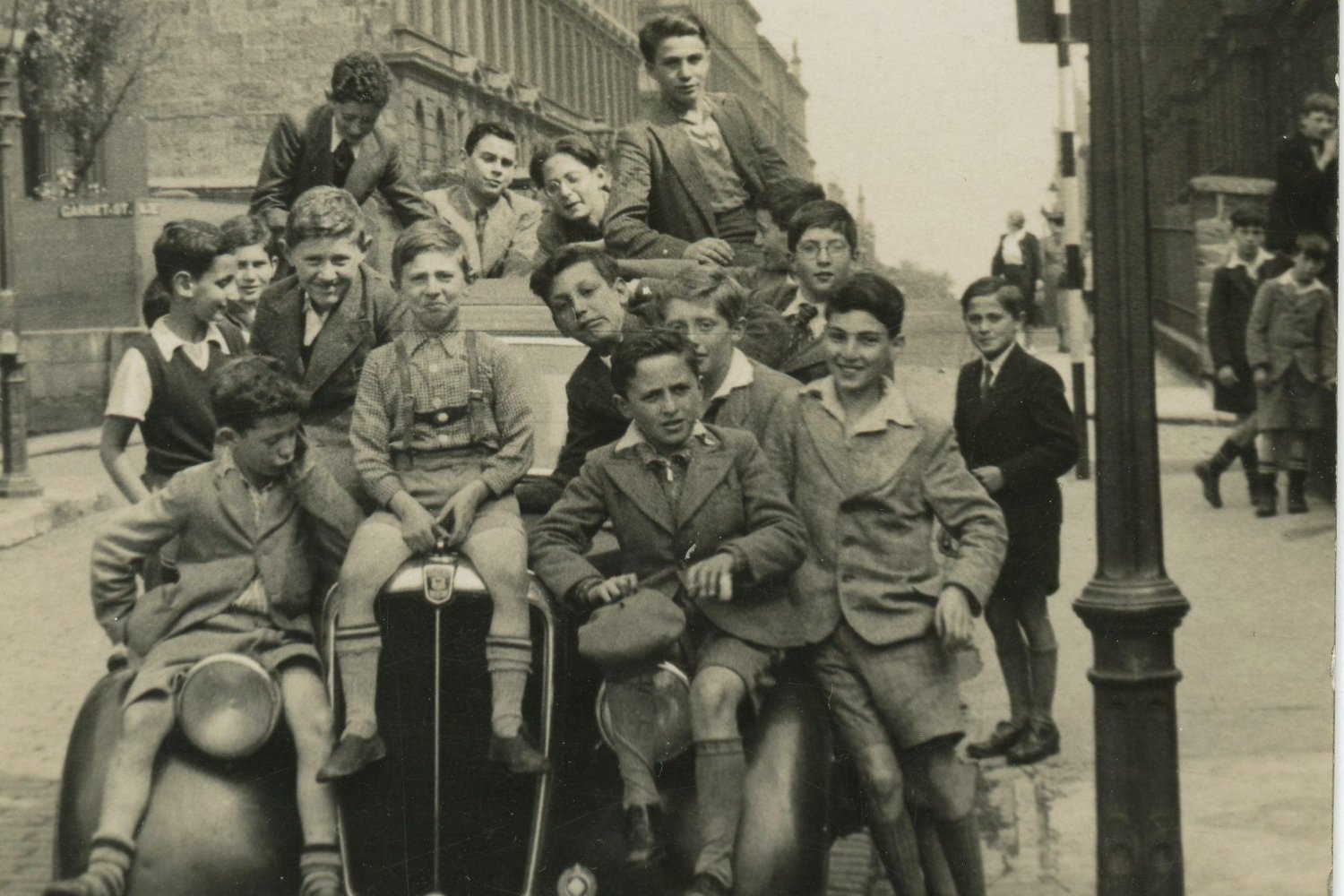A new walking tour traces the lives of the hundreds of Jewish refugees who arrived in Scotland before World War II
Renowned artists, a former classmate of Albert Speer, Scotland’s oldest synagogue and a club for exchanging political views are among the people and sites commemorated by Glasgow’s new Garnethill Refugee Trail. This self-guided walk covers several locations with World War II connections in Glasgow, including Glasgow School Of Art and Garnethill Synagogue, Scotland’s first purpose-built synagogue. The trail was created by the Scottish Jewish Heritage Centre, which opened last year and is based at the synagogue.
Refugees from Germany, Austria and Czechoslovakia who stayed at the Boys’ Hostel at 125 Hill Street, 1939 © Scottish Jewish Archives Centre
“The trail has got a great reaction because we highlighted so many places with a Jewish connection on people’s doorsteps,” explains heritage centre manager Kerry Patterson. “We are keen that people make connections with the refugees of World War II and more recent waves of refugees. We want people to see it as part of their city’s history. On school visits we emphasise that idea: these are people just like you, who are now part of the city and its history.”
Hundreds of Jewish refugees arrived in Scotland before World War II and many gravitated towards Garnethill, where a synagogue had been built at Hill Street in 1879. Beginning at the synagogue, the trail takes in a nearby house that was turned into a boys’ hostel for arriving refugees and an accompanying hostel run by Quakers for Jewish women and girls at Renfrew Street.
Volunteers using the trail, outside the Scottish Jewish Archives Centre, which was established in Garnethill Synagogue in 1987 © Scottish Jewish Heritage Centre
The area’s principal landmark is Rennie Mackintosh’s Glasgow School of Art. Several Jewish artists are associated with the school, including Estonian-born Benno Schotz, who came to Scotland in 1912. He taught refugees from Nazi Europe such as the Austrian sculptor Paul Zunterstein, who eventually taught at the school himself. Another artist associated with the school was Frederick Selby, born Manfred Salinger, who studied architecture in Berlin with Albert Speer. He served with the British Army in Palestine and Egypt before teaching at the art school. Architect Isi Metzstein arrived in Glasgow as a Kindertransportee before attending and later teaching at the school.
The trail continues to Sauchiehall Street, where a club known as ‘the house on the hill’ was located. There, refugees socialised together as well as with native Glaswegians to discuss politics and culture.
“We want to create trails that explore other parts of Glasgow and other Scottish cities. It’s part of our mission, to get that history out there so people know about Jewish heritage in Scotland,” says Patterson.
By Peter Watts
Header photo:The Refugee Club at 358 Sauchiehall Street, 1940s © Scottish Jewish Archives Centre
The Garnethill Refugee Trail is free and available from Scottish Jewish Heritage Centre in person and on their website.
This article appears in the Spring 2022 issue of JR.



